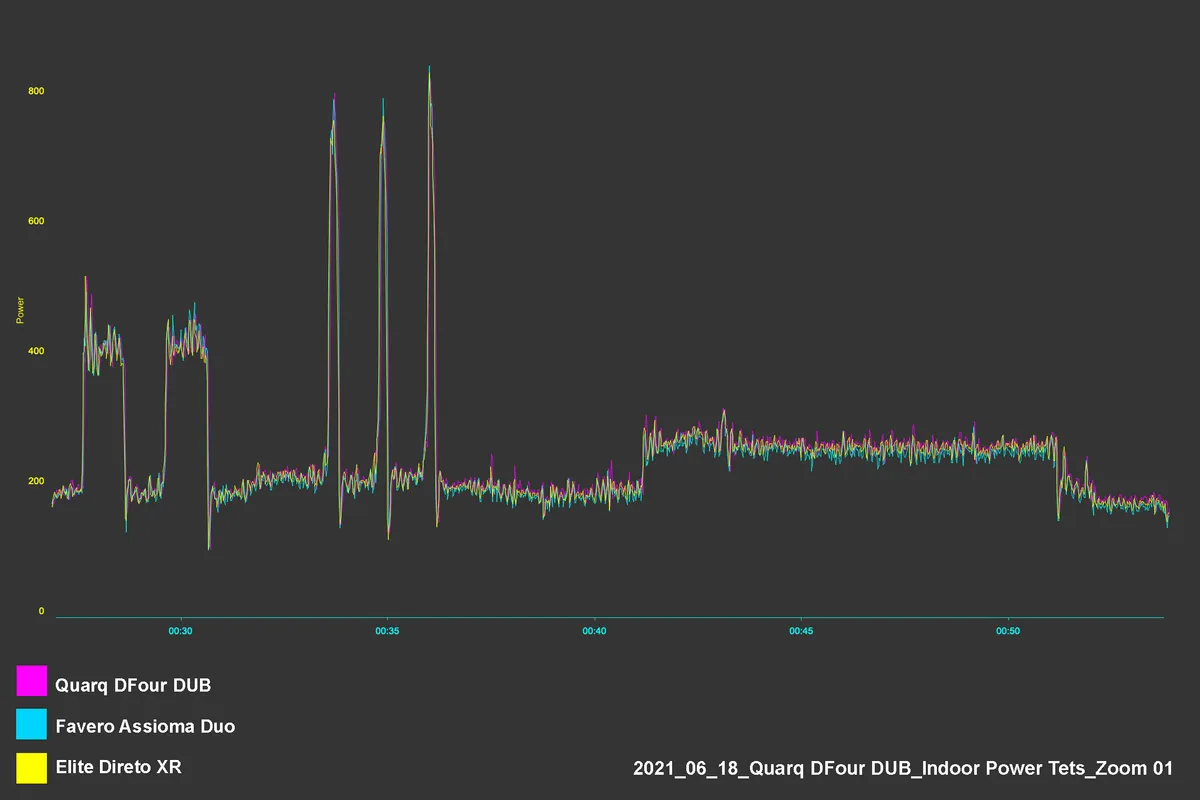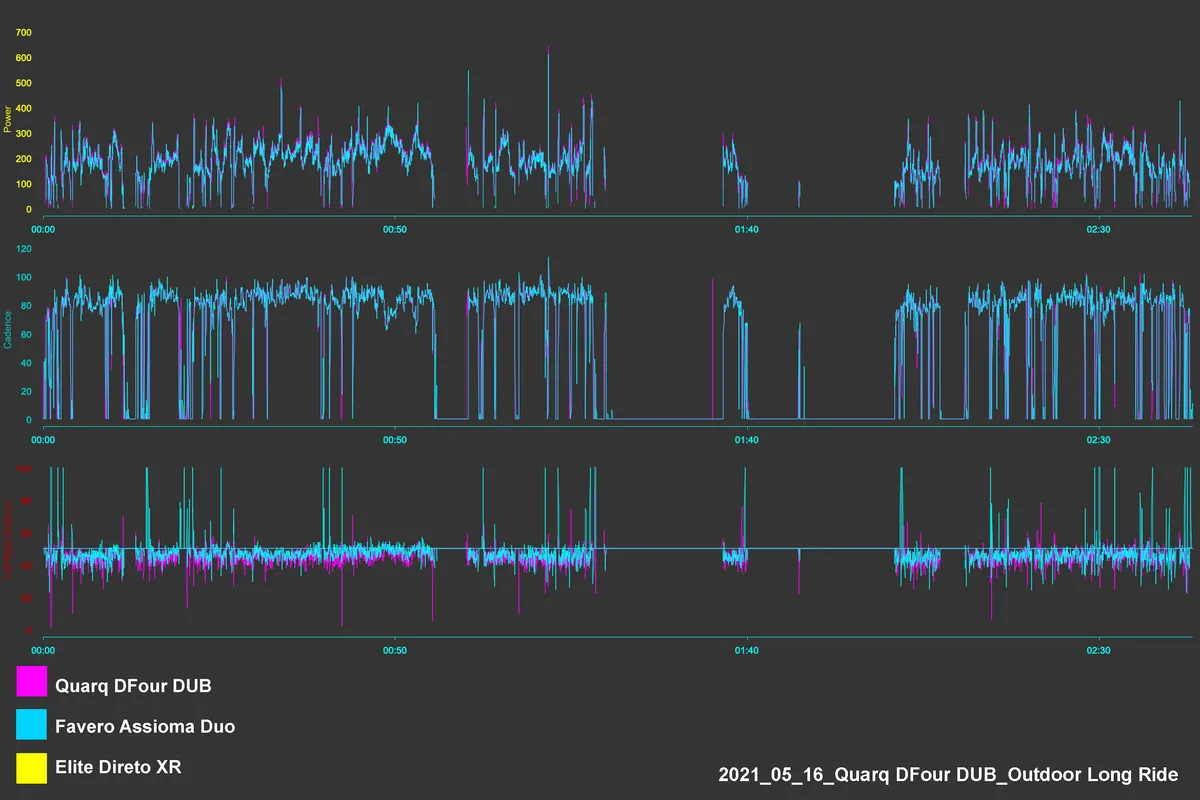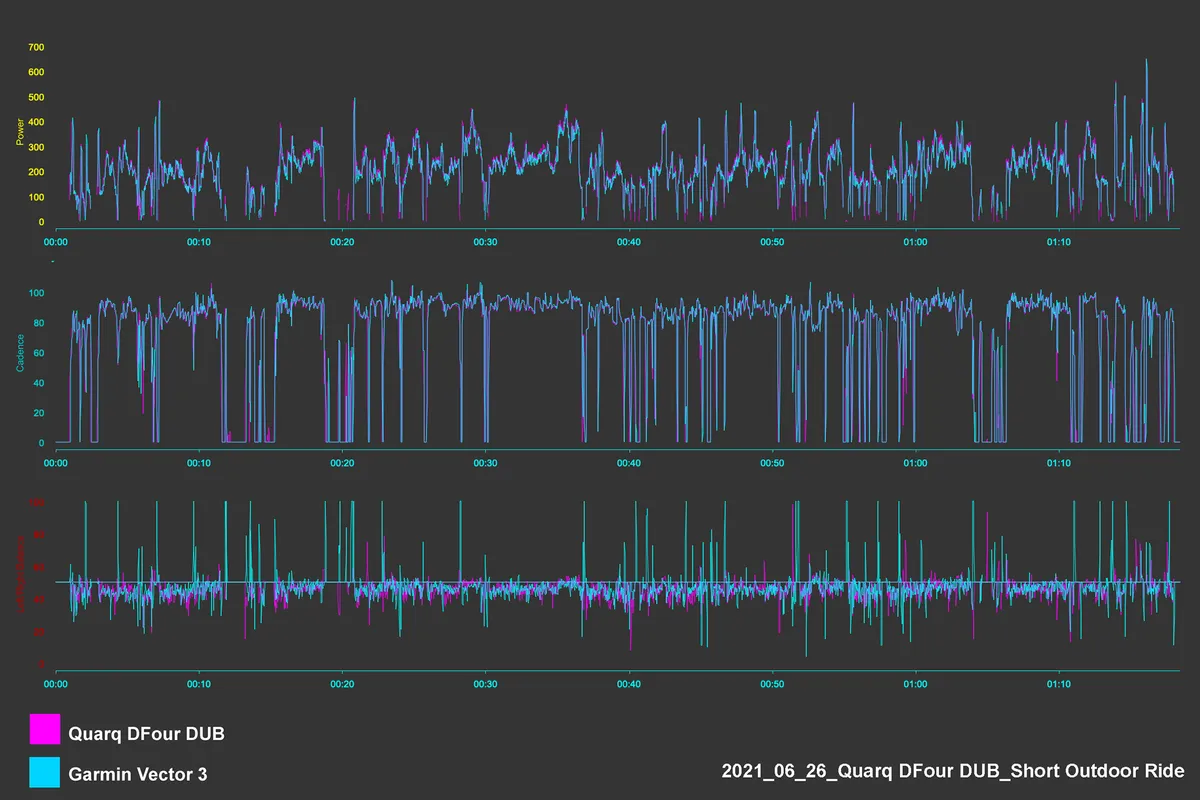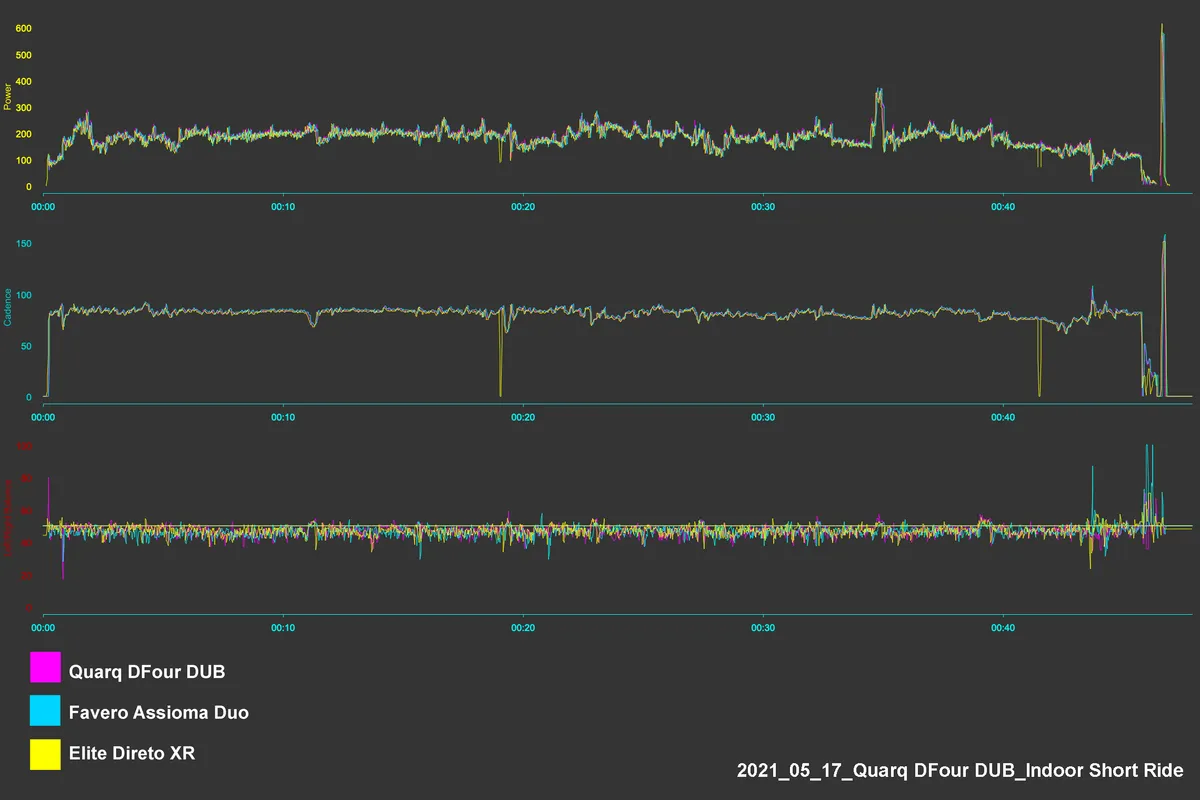The Quarq DFour DUB is a spider-based power meter integrated into SRAM’s DUB (which stands for Durable Unified Bottom Bracket) crank and bottom bracket ecosystem.
Quarq has been in the game for a long time and has earned a solid reputation for producing accurate, reliable and good value power meters.
Though it was acquired by SRAM in 2011, Quarq still produces power meter spiders for non-SRAM drivetrains, in a number of different configurations.
Does the latest generation of Quarq power meters live up to that high standard? In my experience, yes.
While advanced power meter users may wish for a more in-depth feature set, if you just want the basics done well, the Quarq is a great option at an attractive price.
Quarq DFour DUB installation
Before we dive into the installation process, it’s worth scanning through SRAM/Quarq’s extensive collection of power meters, as this should help you pick the right one for you and your bike.
Power meter internals are almost universally shared across the range, so my findings in this review should apply to most of the current SRAM/Quarq power meters. However, the new, left-only power meter for Rival eTap AXS is an exception because it has a different construction to Quarq’s spider-based power meters.
If you use a SRAM AXS drivetrain, Quarq makes power meters to specifically integrate with SRAM Red eTap AXS and Force eTap AXS.
It’s also worth noting that the Red AXS power meter chainset integrates the power meter spider into the chainrings in such a way that the two cannot be separated.
Though this design reduces weight, it also means that you can’t swap the chainrings to change your gearing and you'll need to replace the whole unit in one go when either of the chainrings is worn out.
If that sounds as irrational to you as it does to me, SRAM AXS users can instead opt for the SRAM AXS power meter spider, which has a 107 BCD and is compatible with 1× and 2× SRAM AXS chainrings (although 2× chainring options are only available at Force level).
If you're not using SRAM AXS gearing, there are two Quarq power meter spiders to choose from in Quarq’s DZero range.
There’s the DFour DUB – a four-bolt 110 BCD option designed to integrate with Shimano Dura-Ace R9100 chainrings – and Shimano Ultegra R8000 and 105 R7000 chainrings (and any other four-bolt 110 BCD chainrings) are also compatible but won’t be a perfect match aesthetically.
There may also be an updated version designed to integrate with the new Shimano Dura-Ace Di2 R9200 chainrings after that is officially released.
This spider is designed to work with Quarq DUB and SRAM DUB cranks.

There’s also the DZero DUB, which comes in five-bolt 110 or 130 BCD options, to fit the majority of 10- and 11-speed five-bolt chainrings on the market. There are two versions of this spider, one designed to work with Quarq DUB and SRAM DUB cranks and one for Specialized’s S-Works carbon crankset.
Given my current test bike (a Giant TCR Advanced Pro 2 Disc) is fitted with a Shimano 105 R7000 drivetrain, I tested the Quarq DFour DUB spider.
For me, this required a bottom bracket swap – from a Shimano press-fit BB86 to a SRAM DUB bottom bracket – and you may need to factor this in too if you’re not already using a SRAM DUB bottom bracket on your bike.
A SRAM DUB press-fit bottom bracket costs £40. I was able to get it swapped in by a colleague, using tools we have at BikeRadar, but unless your bike has a threaded bottom bracket (or you have the required tools and skills), this may be something best delegated to your local bike shop.
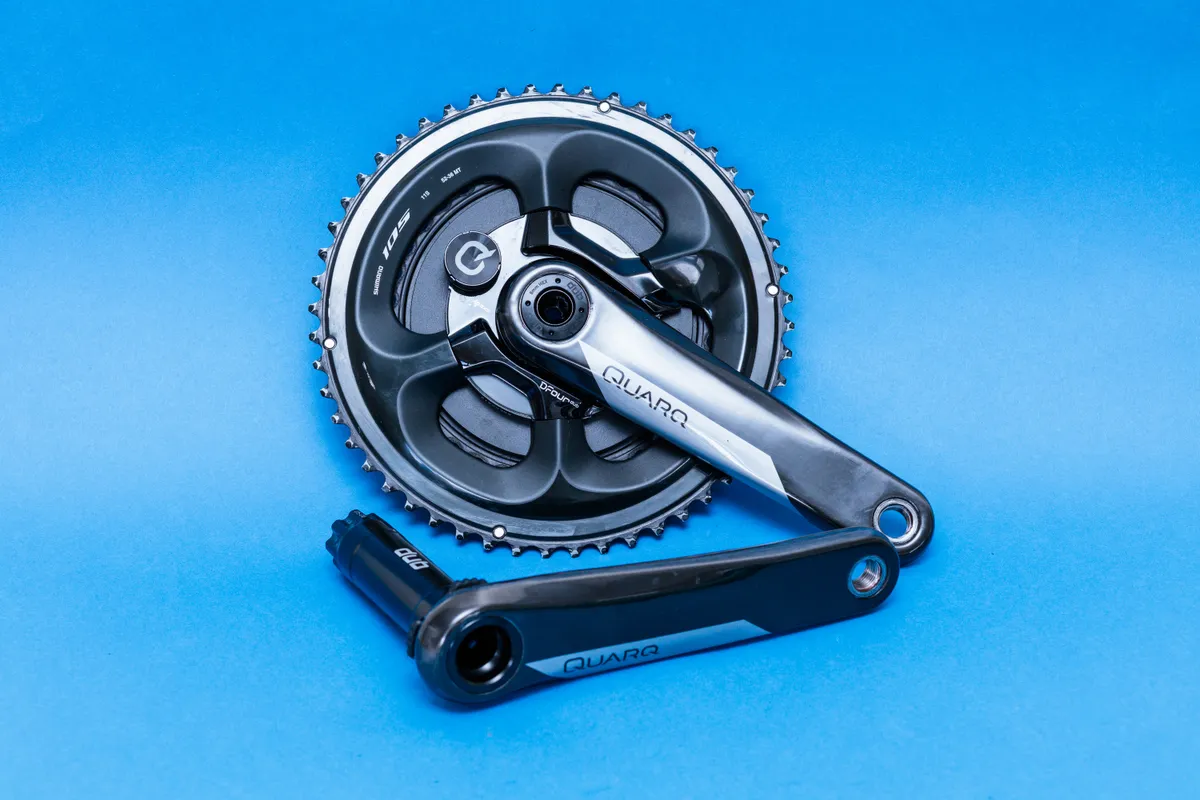
The oversized DUB axle is alloy and measures 28.99mm in diameter. SRAM and many third-party manufacturers make DUB bottom brackets for the majority of modern bicycle frames (a full SRAM DUB compatibility chart is available on SRAM’s website), so finding something to fit your existing bike shouldn’t be an issue.
If you have multiple bikes, this might mean converting all of them to DUB bottom brackets too, if you want to capture power data on every bike.
Once that’s sorted, though, installing the DFour DUB power meter onto your bike is very simple. The cranks and power meter spider arrived assembled, so all I needed to do was attach chainrings and it was ready to go on the bike.
SRAM recommends tightening the chainring bolts to a torque of 12Nm and the driveside crankset on the axle to a torque of 54Nm, so you’ll need a torque wrench.
To tighten the preload screw on the non-driveside crank, a 2mm Allen key is needed. As with any bolt this small, make sure to use a sharp Allen key, otherwise you risk rounding it out.
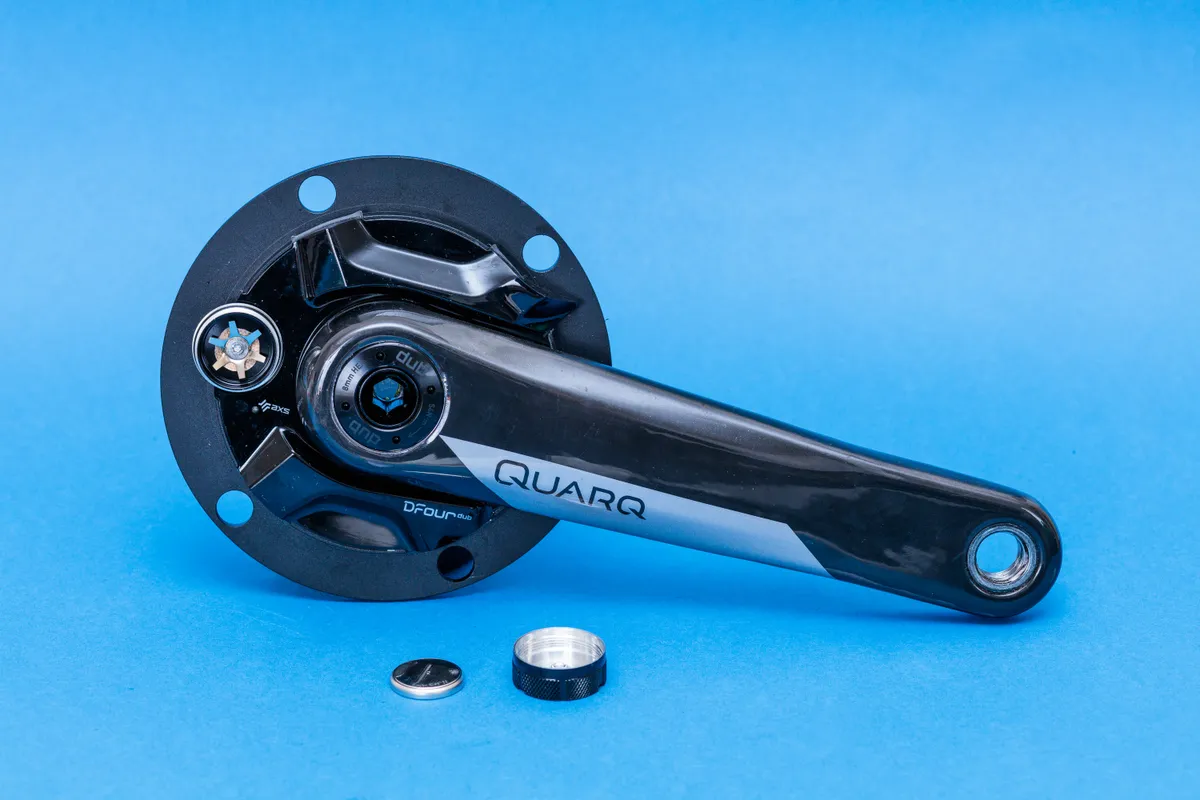
The Quarq DFour DUB uses a single CR2032 coin cell battery that promises 200 hours of battery life.
The battery itself is located on the front of the spider under a well-made, threaded alloy cover. This compartment is conveniently placed for easy access, though it might restrict the use of solid, aero chainrings (unless you’re handy with power tools and willing to cut a small notch in the outer chainring).
Quarq DFour DUB usage notes
The Quarq DFour DUB uses accelerometers to determine cadence, so no frame magnets are required.
With all the electronics being located at the spider, the Quarq power meter is also well protected from crash or accidental damage.
You’re not tied to a set crank length either, with Quarq’s elegant carbon DUB cranks available in lengths from 165mm to 175mm, in 2.5mm increments.
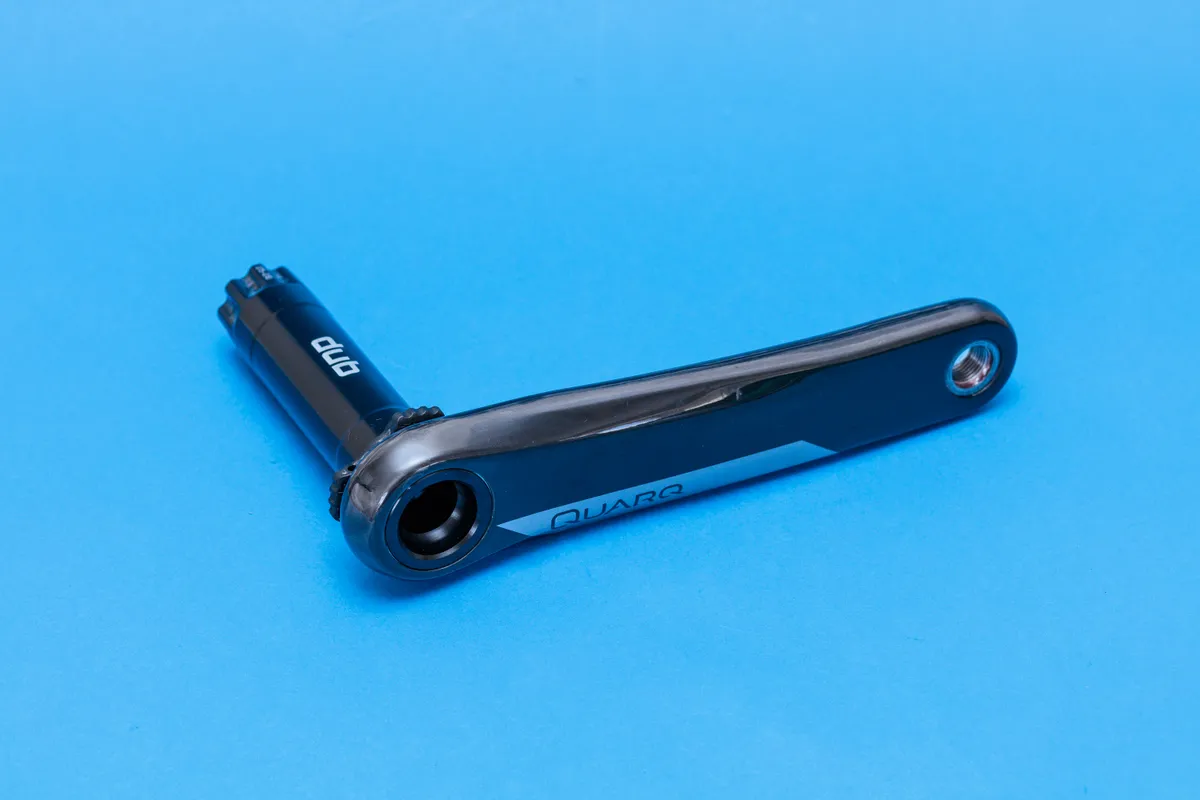
In terms of weight, the Quarq DFour DUB spider and 172.5mm Quarq crankset weigh 641g, which is competitively light. The final, on-bike weight will then depend on what chainrings you use.
The Quarq transmits power and cadence data over ANT+ and Bluetooth, which makes connecting to a bike computer, smartphone, tablet or computer (for using indoor cycling apps like Zwift) very easy.
Quarq power meters are now supported by the SRAM AXS smartphone app (available for iOS and Android), so you can use this to check for firmware updates, battery levels, adjust settings and perform zero offsets.
In use, the Quarq is fuss-free. It only transmits power, cadence and left/right balance data (although the balance data is estimated rather than directly measured – more on this later), and it blends easily into the background of your riding, with no unusual quirks or complicated features.
For those who just want the basics – power and cadence – this is great. The Quarq delivers consistently on those two things and doesn’t bother you with much else.
Those who want to delve into the more niche sides of power meters, and access features such as high-speed data logging or Cycling Dynamics (things like torque effectiveness and pedal smoothness), will need to look elsewhere.
If you do come across any problems, Quarq offers a two-year warranty. This is in line with the majority of other power meters currently available.
Quarq DFour DUB data accuracy
Quarq claims the DFour DUB power meter is accurate to +/- 1.5 per cent, and as a spider-based power meter it measures the total power produced by both legs.
In use, it tracked benchmark power meters, such as Favero Assioma Duo and Garmin Vector 3 power meter pedals, and an Elite Direto XR smart trainer, very well, with no major divergences.
Pick-up speed was good without being spectacular. It’s faster than power meter pedals, but not quite as fast as the best power meter spiders and cranks, with a small delay of a second or two before data starts appearing at the head unit.
There’s a standard, manual zero-offset function, which you can perform via a compatible bike computer or the SRAM AXS smartphone app, but there’s also an auto-zero function to adjust for temperature changes while you ride. Both the manual and automatic zeroing options worked without issue.
The zero-offset function is very simple: spin the cranks to wake up the power meter, rotate the crank arm to put the driveside crank at six o’clock (pointing down), and press calibrate on your head unit. It worked every time with a Garmin Edge 830 cycle computer.
The auto-zero function is called Magic Zero and, combined with the active temperature compensation, it automatically checks the calibration value as you ride.
There is an option to turn this off, but I kept it on throughout testing and had no issues. The power data consistently aligned well with other benchmark power meters, with no obvious drifts.
As the Quarq does not measure the effort from each leg independently, the left/right balance data is estimated rather than measured. The second-to-second data isn’t perfect, but it gets admirably close to the readings from genuine dual-sided power meters, being just one or two percentage points off on average.
Nevertheless, as expected, fringe activities such as single-leg drills do cause the Quarq to trip up. Even with only one foot clipped in, the Quarq still estimates that around 10 to 20 per cent of your total power is being produced by the leg not attached to the pedal.
Whether this really matters or not is debatable, though, and I suspect it won’t be an issue for most cyclists. The power and cadence data remains accurate, it’s simply that the Quarq can’t accurately determine how that power is generated in this extreme scenario.
Quarq DFour DUB conclusion
The Quarq DFour DUB power meter is a great spider-based option for delivering on bread and butter features at a competitive price point.
It offers accurate and reliable power and cadence data, is easy to use and has a simple installation process (once your bike has the right bottom bracket installed).
While it lacks the advanced feature-set some power meters now tout, the use of such metrics is still confined to a small subset of cyclists, and likely won’t be missed by the majority.
- Spider only price: £355 / $399
How we tested
I put seven of the latest power meters head-to-head to find out which is worth your hard-earned cash.
As well as testing the accuracy and reliability of the data on each unit, consideration was given to ease of installation, indoor versus outdoor use, firmware, power calculations, drivetrain compatibility, warranties, compatibility with external units such as bicycle computers, and any other additional features.
Each power meter was tested indoors on a smart trainer and outdoors in all weathers. To assess accuracy, captured power data was compared against data from trusted benchmark power meters recording simultaneously across multiple bicycle computers.
Also on test
Product
| Brand | Quarq |
| Price | €619.00, £549.00, $595.00 |
| Weight | 641g |

